Business
Top Ten Ponzi Schemes That Have Stolen From Nigerians
From MMM to CBEX, here’s a rundown of the most notable scams that have drained billions from Nigerians since 2016.

Despite repeated warnings by the Securities and Exchange Commission (SEC) and the Central Bank of Nigeria, , Nigerians continue to fall victim to Ponzi schemes promising quick returns.
From MMM to CBEX, here’s a rundown of the most notable scams that have drained billions from Nigerians since 2016.
1. MMM Nigeria (2016)
The most infamous Ponzi scheme in Nigeria’s history, MMM Nigeria promised returns of up to 30% within 30 days. The scheme attracted millions before it crashed in December 2016, leaving countless investors in financial ruin.
2. Ultimate Cycler, Get Help Worldwide, Twinkas, iCharity Club, Loopers Club, Givers Forum (2016)
These platforms emerged in the shadow of MMM’s popularity. Using referral networks and cycling models, they lured thousands with mouthwatering promises, only to vanish within months.
3. NNN Nigeria, MMM Cooperation, GCCH, RevoMoney (2017)
After the MMM crash, copycat schemes took over, rebranding old models with new names. NNN and MMM Cooperation tried to ride on the MMM name, exploiting previous participants who still hoped to recover losses.
4. Bitclub Advantage, Million Money, Helping Hands International (2018)
These schemes masqueraded as crypto-based platforms or charity networks.
They capitalized on the growing interest in digital currencies but delivered the same outcome — massive losses.
5. Loom and Crowd1 (2019)
Viral social media campaigns fueled the rise of Loom and Crowd1. Promoters used WhatsApp and Facebook to promise “double your money” schemes that quickly collapsed when recruitment stalled.
6. InksNation, Lion’s Share, Baraza Multipurpose Cooperative (2020)
InksNation promised a digital currency that would end poverty but was shut down by the SEC. Baraza claimed to be a cooperative but operated like a classic Ponzi, while Lion’s Share mimicked MLM structures.
7. Racksterli, Eagle Cooperative, 86FB (2020–2021)
These platforms used influencer marketing and sports betting gimmicks. 86FB, in particular, gained popularity before crashing spectacularly, taking millions from investors.
8. FINAFRICA, Royal Q (Nigeria version), Ovaioza (2022)
FINAFRICA used the lure of forex trading. Royal Q posed as a crypto trading bot, and Ovaioza claimed to store and sell agricultural produce. All failed to deliver on promised returns.
9. CALA Finance, 6Dollars Investment, Sidra Investment, WealthBuddy, Compoundly (2023–2024)
These new-age platforms were heavily marketed online. Sidra was a clone scam, while others mimicked DeFi and crypto investment trends, using hype and bonuses to attract victims.
10. BitFinance Global and CBEX (2025)
In the latest wave, BitFinance Global and CBEX are among the schemes already causing financial pain in 2025.
They repeat the same patterns — false claims, unrealistic returns, and eventual disappearance.
(Words and Image credit: Vanguard )
Business
E- Commerce: bitMART Launches in Nigeria with Same-Day Delivery, Buyer Protection and Merchant Financing

Photo: Left to Right: Amaka Onaibre – Legal Counsel, Dr Eke Eke – Chief Executive Officer, Tolulope Ogungbade – Business Manager & Chief Operating Officer.
bitMART, a new Nigerian-focused e-commerce platform, has officially launched operations, unveiling a suite of innovative features designed to address long-standing challenges facing online shopping and digital commerce across Nigeria and Africa.
Speaking at the launch, Chief Executive Officer of SpringRock Group and founder of bitMART, Dr. Eke Eke, said that the platform was built with a deep understanding of the peculiar realities of the African market, particularly issues around delivery delays, payment security, product quality and access to business capital.
Beyond online marketplace
Dr. Eke emphasised that bitMART is not merely an online marketplace but a technology-driven operating system tailored to manage the infrastructural and logistical challenges unique to the region, while delivering services comparable to global e-commerce standards.
One of the platform’s standout innovations is its same-city, same-day delivery service, aimed at restoring consumer confidence in online shopping.

A gap bitMART intends to close.
Dr. Eke noted that delays in delivery have historically discouraged Nigerians from relying on e-commerce for urgent purchases, a gap bitMART intends to close.
The platform also places strong emphasis on promoting Made-in-Nigeria products, offering buyers access to a wide range of locally produced goods without the restrictions commonly seen on other platforms.
This, according to the founders, will enhance affordability while supporting local manufacturers and merchants
To attract early adopters, bitMART has rolled out multiple promotional incentives. The first 5,000 users to register on the platform will receive a ₦1,000 gift card, while users who successfully refer others that make purchases will earn ₦1,000 per referral, with no cap on earnings.
First-time buyers will also enjoy additional rewards, creating multiple earning opportunities for active users.
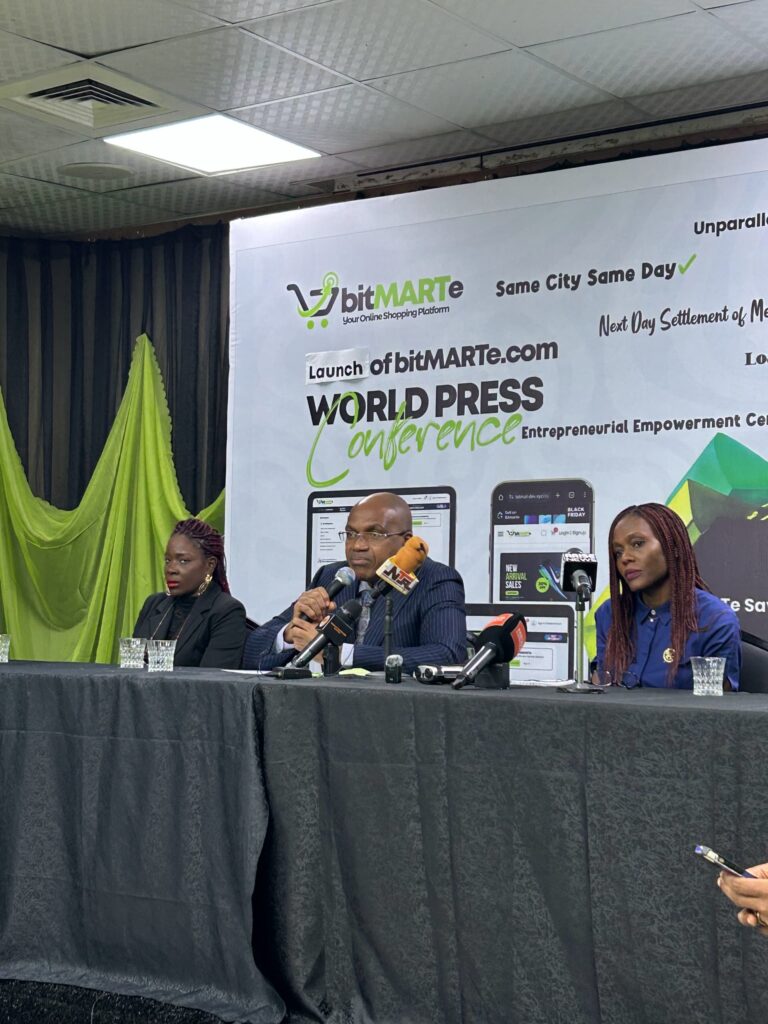
Payment Safety
Addressing concerns around payment safety, Dr. Eke explained that bitMART operates a secure escrow-style payment system, ensuring that funds are only released to merchants after buyers confirm receipt and satisfaction using a unique verification code.
This mechanism, he said, provides strong protection against fraud and misrepresentation.
In addition, bitMART has established a robust quality assurance framework to ensure product accuracy and integrity. Items that fail to meet stated standards will be removed from the platform, while goods damaged in transit will be replaced at no cost to the buyer.
The company also pledged to investigate and address the root causes of such incidents to maintain high service standards.
bitMART’s customer service architecture
Dr. Eke emphasized that bitMART’s customer service architecture is deliberately buyer-centric, with centralized handling of interactions to ensure consistency, professionalism and fairness across the platform.
Beyond buyers, bitMART is also positioning itself as a growth partner for merchants.
In response to a question on its merchant financing model, Dr Eke disclosed that the platform plans to offer loans to active merchants after six months of operation, based on transaction history, cash flow and conduct on the platform.
He noted that access to affordable credit remains a major obstacle for Nigerian businesses, adding that bitMART’s financing model is designed to provide practical and sustainable loan terms, in contrast to the high interest rates typically charged by commercial banks.
Present at the launch
Also present at the launch were Mrs Tolu Ogungbade, Business Manager and Chief Operating Officer of bitMART, and Mrs Amaka Onaibre, Legal Adviser, who both reaffirmed the company’s commitment to transparency, compliance and long-term value creation for users and partners.
With its official launch, bitMART is now live and open to users across Nigeria, positioning itself as a technology-enabled commerce platform focused on speed, trust, local content and economic empowerment.
Business
Heirs Energies Secures $750 Million Financing from Afreximbank for Expansion
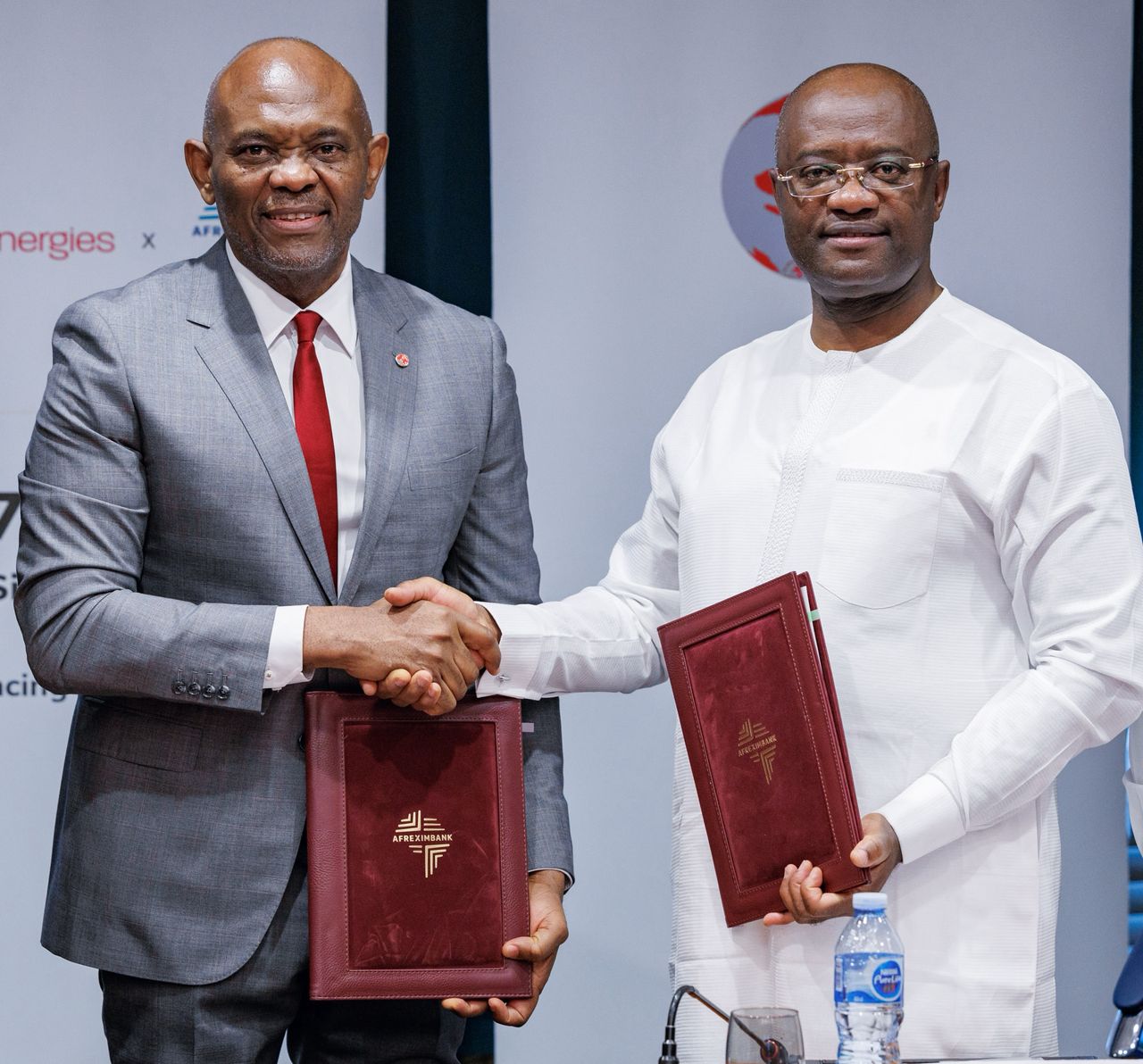
Heirs Energies Limited, Nigeria’s leading indigenous integrated energy company, has secured a $750 million financing facility from the African Export-Import Bank (Afreximbank).
The deal was finalized during a signing ceremony in Abuja on December 20, 2025, attended by Tony O. Elumelu, CFR, Chairman of Heirs Energies, and Dr. George Elombi, President and Chairman of Afreximbank.

This transaction marks one of the largest financings ever obtained by an indigenous African energy firm, underscoring strong confidence in Heirs Energies’ operational track record, governance, brownfield expertise, and future growth potential.
Since taking over operatorship of Oil Mining Lease (OML) 17, Heirs Energies has implemented a rigorous turnaround strategy, emphasizing production recovery, asset integrity, and efficiency gains.
Through targeted interventions and infrastructure upgrades, the company has shifted from acquisition-focused funding to a sustainable capital structure suited to long-term reserve development.
Production has doubled since acquisition, rising from 25,000 barrels of oil per day (bopd) and 50 million standard cubic feet of gas per day (mmscf/d) to more than 50,000 bopd and 120 mmscf/d currently. All gas output is supplied to Nigeria’s domestic market, playing a key role in supporting national power generation.
The company has also overhauled community engagement and upheld top-tier health and safety standards.
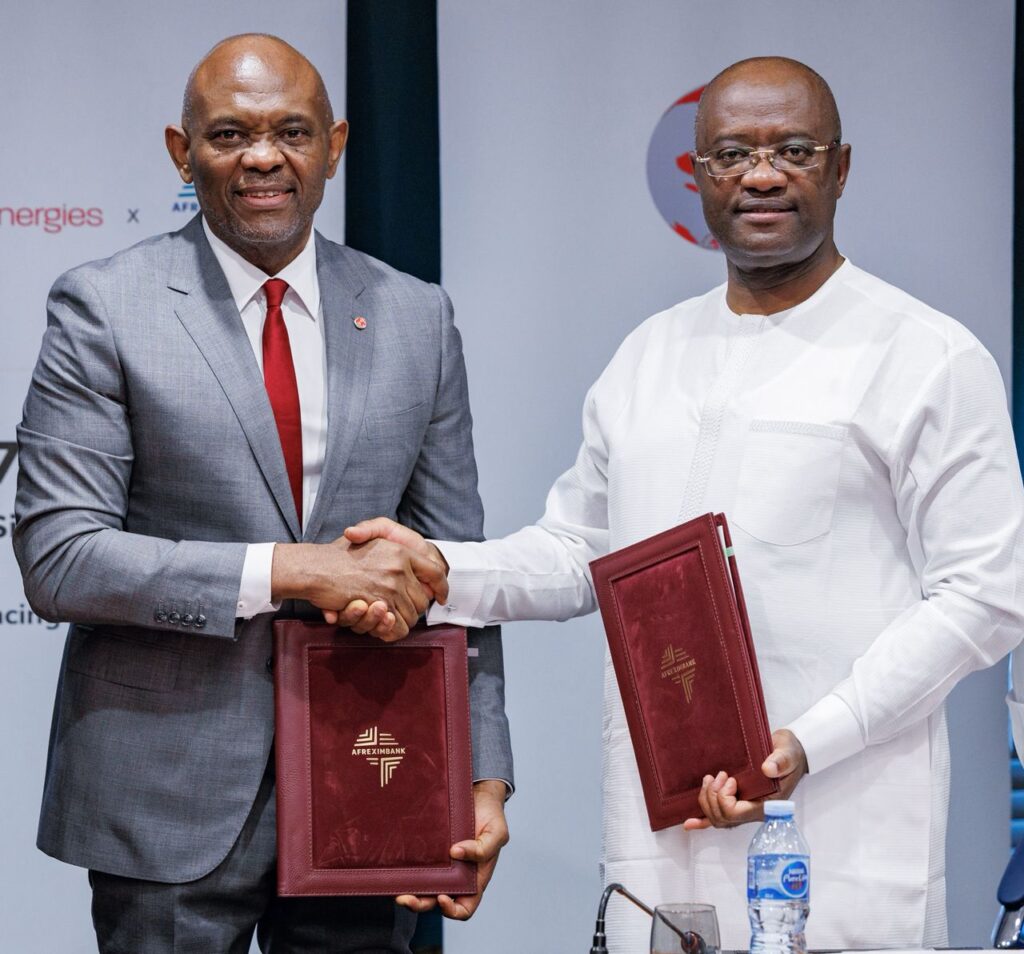
The new Afreximbank facility will fund accelerated field development, production optimization, and strategic growth initiatives, all while adhering to strict capital discipline.Tony O. Elumelu, CFR, Chairman of Heirs Energies, commented: “This transaction is a powerful affirmation of what African enterprise can achieve when backed by disciplined execution and long-term African capital.
It reflects the successful journey Heirs Energies has taken—from turnaround to growth—and reinforces our belief in African capital working for African businesses. This is Africa financing Africa’s future.
”Dr. George Elombi, President and Chairman of Afreximbank, added: “Afreximbank is proud to support Heirs Energies at this pivotal stage of its growth.
This financing reflects our confidence in the company’s leadership, governance, and asset base, and aligns with our mandate to support African champions driving sustainable economic transformation across the continent.
”The deal highlights Afreximbank’s commitment to empowering indigenous operators capable of advancing energy security, sustainable development, and economic value throughout Africa.
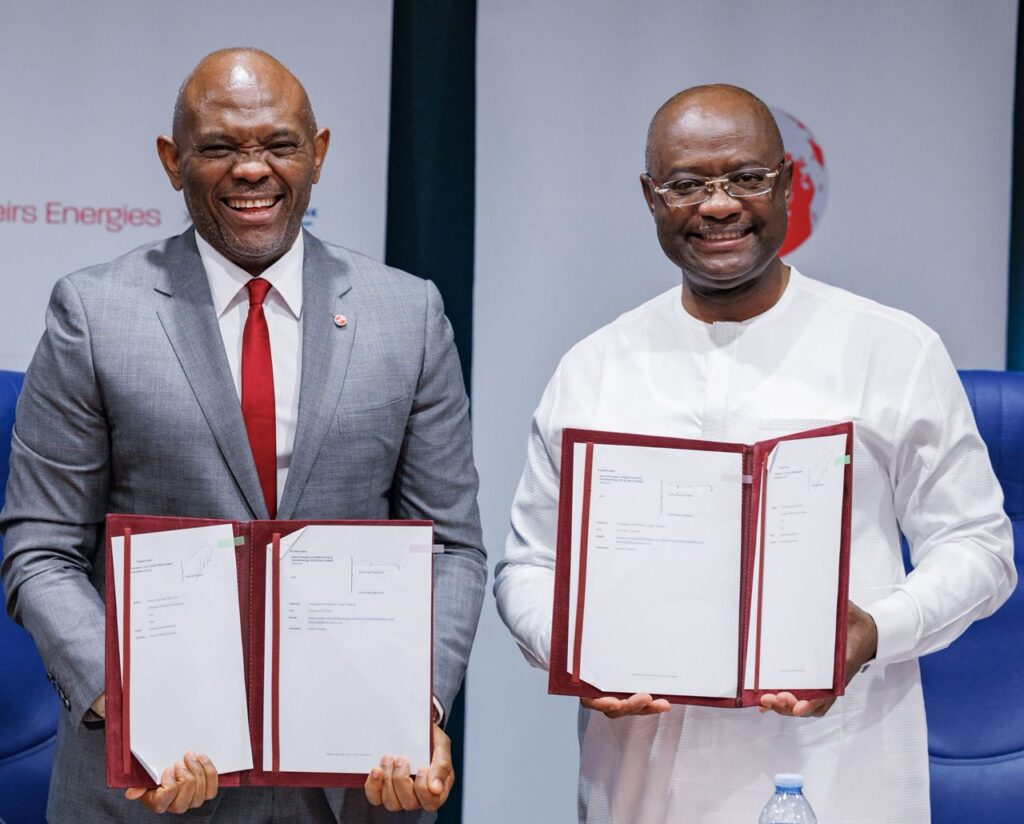
With this funding in place, Heirs Energies is well-positioned for its next growth phase, prioritizing operational excellence, responsible resource management, and lasting stakeholder value.
Heirs Energies Limited is Africa’s leading indigenous-owned integrated energy company, dedicated to addressing the continent’s energy demands while advancing global sustainability objectives. It emphasizes innovation, environmental stewardship, and community development in the evolving energy sector.
The African Export-Import Bank (Afreximbank) is a Pan-African multilateral institution focused on financing and promoting intra- and extra-African trade, supporting industrialization, trade growth, and economic transformation.
Business
Dangote: A Dogged and Fierce Fighter for Local Industries Survival
Nigeria aims to reduce reliance on imported refined fuels by 2024/2025, transitioning to self- sufficiency through the Dangote Refinery and rehabilitated refineries in Port Harcourt, Warri, and Kaduna, with plans to become a net exporter.

By OCHEFA
Africa’s billionaire Aliko Dangote, an astute industrialist, is always attentive to the environment around him, embodying the idiom” ears to the ground.
His investments in Nigeria and the other African countries span cement, sugar, petrochemicals, fertilisers and his latest venture, a $20 billion petroleum refinery in the Lekki free trade zone in Lagos.Six months ago, Dangote stepped down as the Chairman of the Dangote Group’s Board on July 25, 2025.
Anthony Chiejina, the Group’s Chief of Branding and Communications, explained that this move allows Dangote to focus more on the refinery, petrochemicals, Fertiliser, and government relations, to elevate the company’s five- year plan to new heights.
Subsequently, Emmanuel Ikazoboh, an independent non- executive director, was appointed Chairman of Dangote Cement Plc.
With his keen awareness of global and local oil and gas developments, Dangote closely monitors issues affecting his refinery’s operations.
He relies on a team of experts to keep him informed, and he responds fiercely against policies threatening his interests.
A current example is his public dispute with Farouk Ahmed, CEO of the Nigerian Midstream and Downstream Petroleum Regulatory Authority (NMDPRA).
With his keen awareness of global and local oil and gas developments, Dangote closely monitors issues affecting his refinery’s operations.
Recently, Dangote accused NMDPRA of economic sabotage, criticising its continued issuance of import licences for petroleum products- licenses totalling approximately 7. 5 billion litres of PMS for early 2026- despite Nigeria’s growing refining capacity.
He claimed this undermines local refining, sustains Nigeria’s dependence on fuel imports, and discourages local investments.
Dangote also alleged collusion between NMDPRA and international traders, which the regulator has denied.
Nigeria aims to reduce reliance on imported refined fuels by 2024/2025, transitioning to self- sufficiency through the Dangote Refinery and rehabilitated refineries in Port Harcourt, Warri, and Kaduna, with plans to become a net exporter.
Policies like a proposed 15% duty aim to make imports more expensive and accelerate this transition.
Dangote insists that he seeks accountability, not removal, calling for an investigation into NMDPRA’ s actions.
Following Dangote’s accusations,Ahmed resigned, acknowledging awareness of allegations against him and his family, which have attracted public attention.
He stated he avoided public disputes due to the sensitive nature of his regulatory role but welcomed a formal investigation to clear his name.
President Tinubu then asked the Senate to approve new CEOS for NMDPRA and NUPRC- Engineer Saidu Aliyu Mohammed and Oritsemeyiwa Amanorisewo Eyesan, respectively.
-

 Sports2 days ago
Sports2 days agoAFCON 2025: Davido bets N36million on Nigeria vs Tanzania
-

 Crime3 days ago
Crime3 days agoBREAKING: Nigeria Secures Release of Last 130 Abducted Pupils in Niger State; None Remain in Bandit Captivity
-

 News2 days ago
News2 days agoTinubu Hails DSS DG Ajayi for Championing Press Freedom in IPI Award Recognition
-
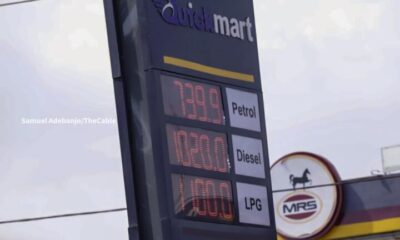
 News1 day ago
News1 day agoDangote fixes petrol selling price at ₦739 only at MRS stations selling nationwide
-
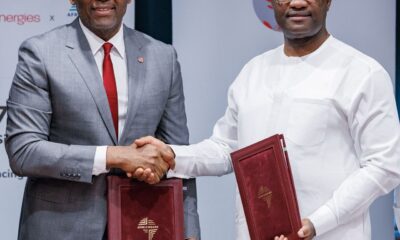
 Business3 days ago
Business3 days agoHeirs Energies Secures $750 Million Financing from Afreximbank for Expansion
-

 Opinions2 days ago
Opinions2 days agoIn Praise of Nigeria’s Quiet Heroes
-

 Sports2 days ago
Sports2 days agoAFCON 2025 opens with Morocco 2–0 Comoros
-

 News1 day ago
News1 day agoKWAM1 loses bid to block Awujale selection process







